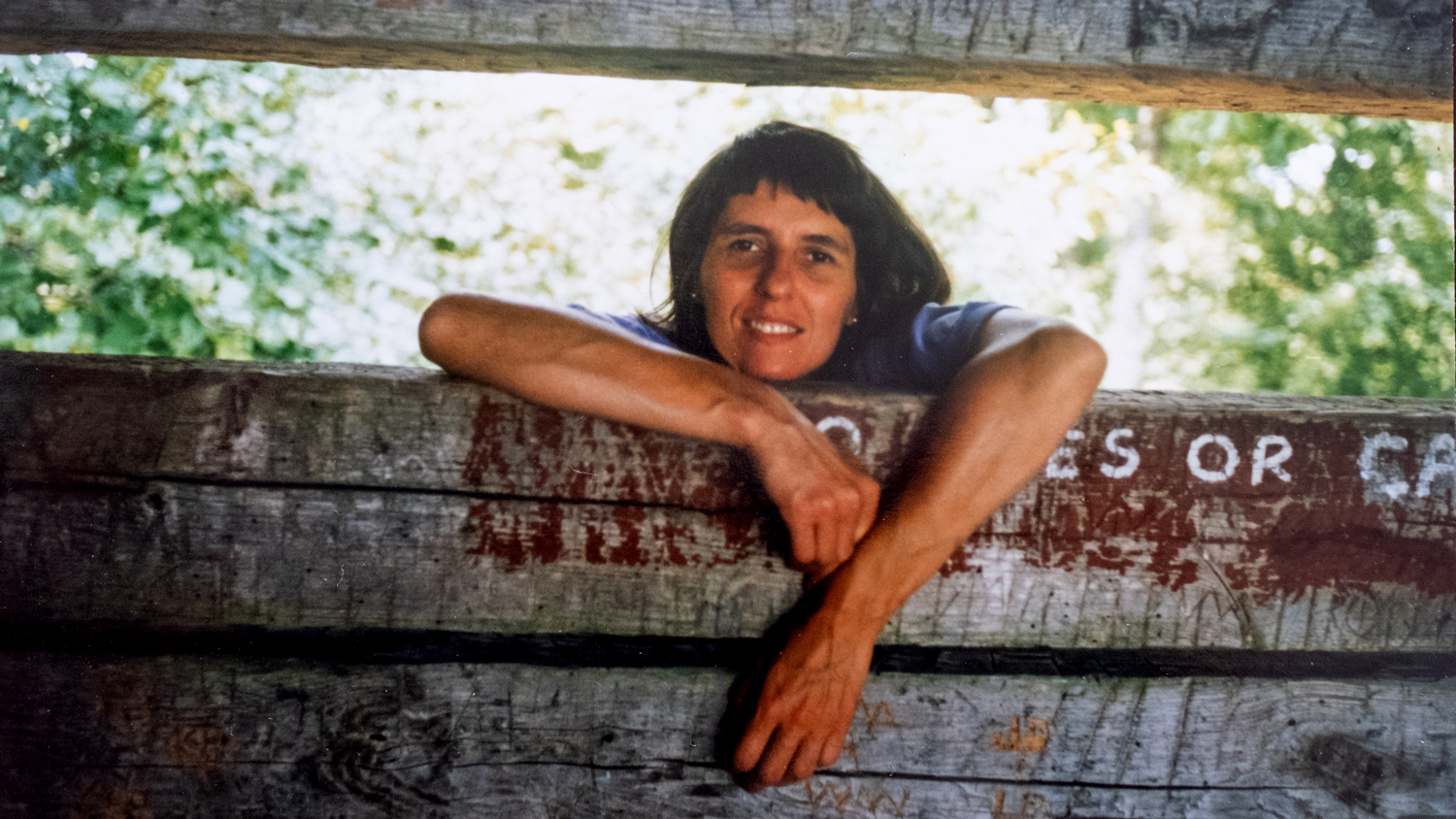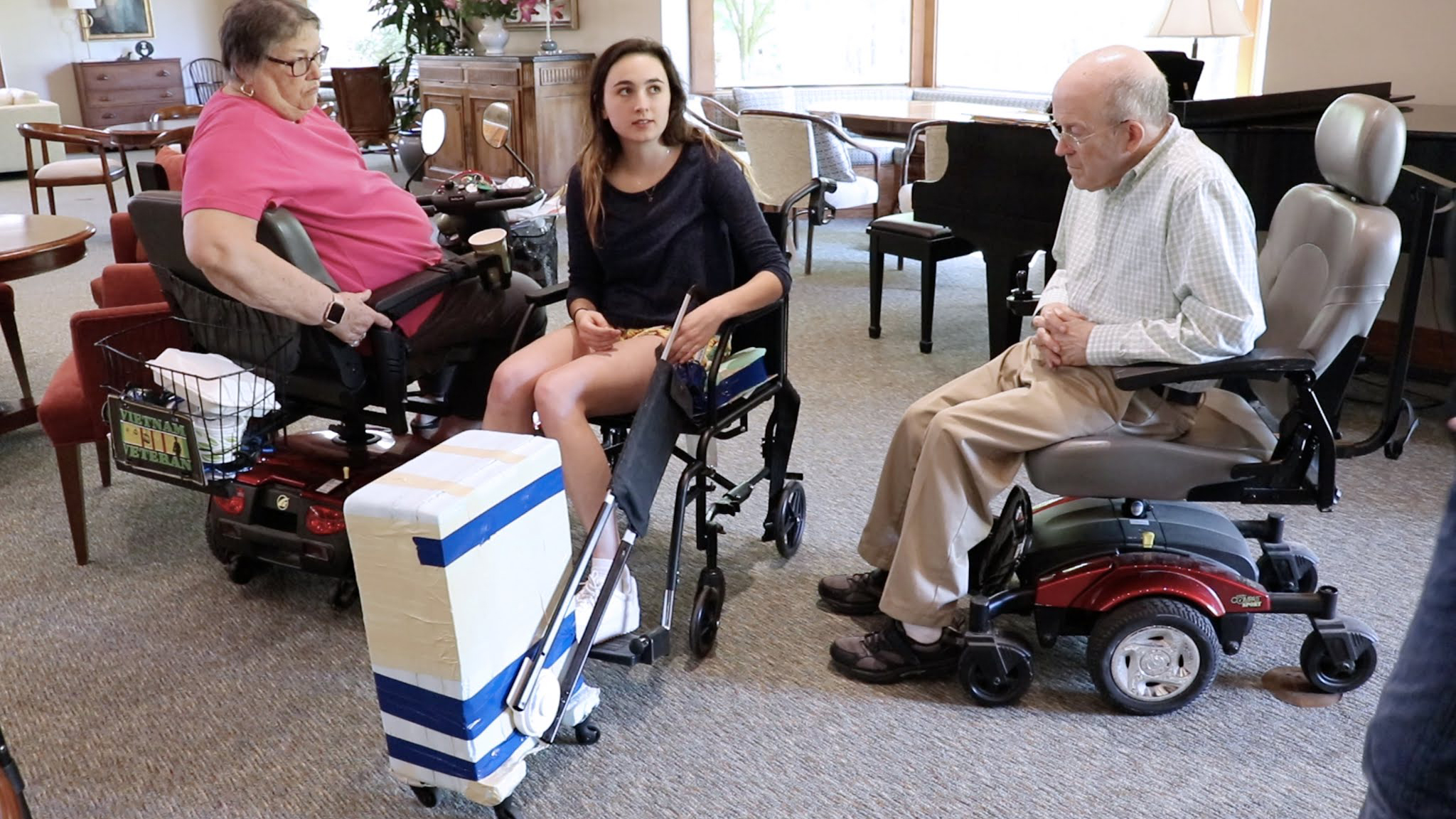A Man with a Vision
Sometimes “re-invention” comes in the form of seemingly insurmountable personal challenges. For designers and artists, the loss of one’s eyesight has to be pretty far up the list as far as challenges go. Architect Chris Downey has not only persevered after losing his sight, he has thrived in new ways in both his profession and in his approach to life. He credits his design education as one way of helping him cope.
After graduating from the College of Design, Chris Downey [‘84 BEDA] began his career in Boston with Schwartz/Silver Architects. He subsequently received his masters degree at UC Berkeley and in 2008, joined Michelle Kaufmann Designs in Oakland, CA, as a managing principal where he managed the sustainable modular construction area of practice for the firm. Life was good and architects were enjoying a bustling economy – then came the bad news. Downey was diagnosed with a brain tumor shortly after starting his new job and subsequently underwent surgery. He describes the growth as “the best tumor in the worst spot” near the pituitary gland and pressuring his optic nerve. Immediately after surgery, Downey still had some basic visual sensations of light and could detect blurry shapes, but within a few days his eyesight faltered, leading to a total loss of sight. This led to what he understatedly terms, “an abrupt retooling and refocusing of my architectural career.” The adjustment required dedicated hard work and specialized rehabilitative training to allow him to resume his career. A testament to his character, Downey was determined to move forward and went back to work exactly a month after the surgery. “I figured since there were no books on how to be a blind architect, I may as well get back to work and figure it out for myself,” he said.
It was anything but easy. “Initially a lot of people, especially friends that are architects, would say things like ‘losing your sight as an architect, that’s the worst thing imaginable,’ ” Downey remembers. “I never thought about that. I’m an avid cyclist and had nightmares of me flying off a road and ending up with a physical disability, but I never thought about blindness. To wake up one day and find you’re blind…” his voice trails off and he snaps his fingers to illustrate how quickly things changed, adding wryly, “It’s a bit disruptive.Thinking as a designer and losing your sight, the immediate reaction is that’s the end of the world. But the creative process is an intellectual process – it’s how you think; it’s how you problem solve; it’s how you imagine.”
For Downey, his new circumstance presented challenges that harkened back to his earliest student days. “I started realizing that with a design education it goes back to things that came up in my design fundamentals classes at the School of Design,” Downey thoughtfully recalls. “It was very much like the design process in general – this is the situation, these are the givens, these are the constraints. I remember having projects in school and there would be some constraint that seemed to ruin the project,” he says.“Often the approach would be to try and ignore it but you can’t do that. It’s not until you just absolutely embrace it that you can find something magical and surprising. That’s really what I tried to do in this case was to embrace it.”
Kaufmann’s workplace also provided a welcoming and encouraging environment for Downey’s post-surgery return. “The office was filled with fun, energetic, positive people,” he recollects. However, the firm fell victim to the economic downturn of 2008 that hit the architectural industry especially hard, leading to Downey’s layoff and the office’s eventual closure. Forced to start anew in the depths of the recession in the winter of 2009, he began having success working as a special consultant to architects and design firms engaged with projects for the visually impaired. He has amassed an impressive roster of clients including working with HUD on a blind housing renovation in New York and working with Duke University’s Eye Center in Durham, NC.
One project in particular proved to be a watershed moment for the Downey. “The Polytrauma and Blind Rehabilitation Center in Palo Alto was a place where my disability became valued to the client and to the architects that I was working with,” he said. “It immediately turned my disability upside down and I tried to imagine how that could be a differentiating strength.” Downey found that his newfound role allowed him to have an unexpected influence on the architecture itself. “It enabled the builders to find value in alternative views, opinions and experiences, which within the profession itself, has been really interesting because as designers we’re so heroically visual.” It is a term Downey uses often, one that has guided his rethinking of architecture. “It’s not that I’m not interested in the visual aspects of architecture anymore, but in many ways, I think of that as the easy part. I can still make things look good but it’s much more challenging to think about how to make the tactile experience or physical aspect of a building really worthwhile, engaging and delightful.”
The capability to guide potential experiences in compelling ways outside the traditional aesthetic boundaries of architecture is a key aspect of Downey’s reinvented career and perspective. “We tend to use sight and vision as interchangeable things, but these are hardly interchangeable in my situation,” he noted. “I can be an architect without sight, but I can’t be an architect without vision. I’m actually starting to realize that I have perhaps better vision now working without sight in terms of a broader spectrum of things to consider, ways to work, people to consider, and the society at large to design for and include in projects.” Downey has also gained an added appreciation of the power of our other senses and the capabilities for tapping into those in building design.
“I realize blindness is less about not having sight,” he says, “it’s about really focusing on all these other senses and I think that gives a very unique contribution to the architectural experience whether you’re designing for the visually impaired or for everyone in general. It makes for a much more rich and engaging environment.”
The success with this new approach has allowed Downey to again establish his own design practice, Architecture for the Blind, where he is involved with challenging projects like the massive Transbay Transit Center in downtown San Francisco, a four-block-long multi-modal regional hub that will link eleven different public transit systems and provide connections to new nearby office and residential towers, parks and shops. “My role is to figure out how on earth the blind are going to function in that kind of facility,” Downey said, “I use that bus service myself so it’s exciting to imagine improvements for how the visually impaired will get to work or school and function on a daily level.”
A critical part of Downey’s toolbox is a very specific printer that allows him to print out CAD drawings with embossed lines that read like Braille [see photo on left]. With these prints he can decipher the plans and renderings and walk through the spaces of a planned building with his fingertips similar to the way he reads Braille. He also uses thin wax sticks as a drawing tool that he can easily press together and/or remove right on top of drawings to give his sketch ideas tactile form.
Another equally exciting prospect on the horizon for Downey is what he considers the “holy grail” of design for an architect – a museum. “I have the opportunity to consult with the Institute for Human Centered Design in Boston on the accessibility of an exhibit for the new Edward M. Kennedy museum, which is under construction next to the John F. Kennedy library at the University of Massachusetts,” he said. “This work goes well beyond simply providing accessible physical access to building entrances and interior facilities. The real challenge is how to make content available to people with sensory impairments. Disability and blindness cuts across ethnic and social racial and economic lines. I’ve heard it said in the disability community that there are really only two types of people – those with disabilities and those who haven’t quite found theirs yet. As Downey has reinvented his life and his career, it is obvious that he has found his niche and strength – as a true visionary.
- Categories:


